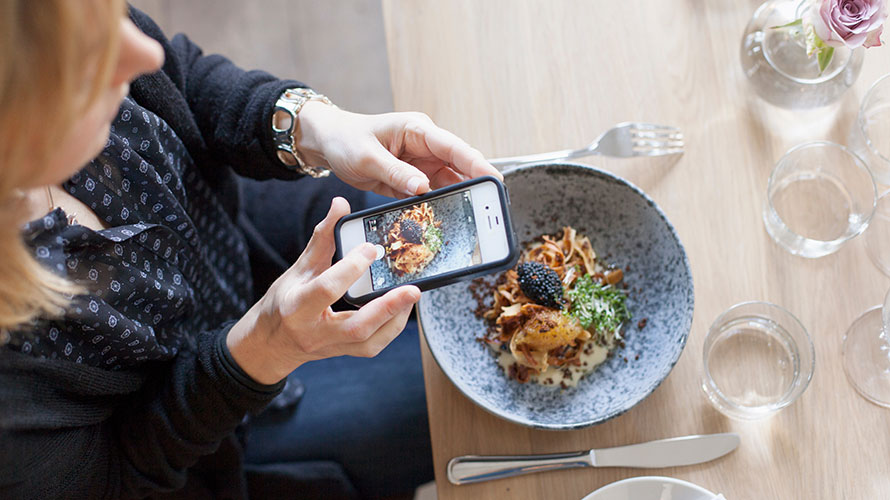
The room service tray overflowing with a lavish feast of buttered croissants, fluffy eggs, freshly squeezed juice, and sliced fruit—check. The pensive poolside selfies complete with a frothy cocktail—check. The outfit photo shoots where hotels serve merely as a fashionable prop—check.
NB: This is an article from Storified Hospitality Group
We know the power of influencer marketing is formidable. According to a joint study conducted by gen.video and Geometry Global, 90% of people will make a purchase after seeing social media content, and 33% believe social media influencers are the most trusted sources for shopping—twice as much as family and friends!
On the brand side, campaigns often experience 11X the ROI of traditional advertising, creating a climate of happy hotel marketers. In 2017, one billion was invested on Instagram influencers alone, where many of whom command upwards of $100K per post. Overall investment will reach $5-$10 billion dollars by 2020.
From an aesthetic perspective, influencers offer a posh perspective and an aspirational narrative straight out of high fashion magazine. In a Fortune interview, a spokesperson from The Mulia Resort in Bali makes the tradeoff clear. “As much as I can try to ask our in-house photographers to take beautiful pictures, we don’t have the skills to do an editorial type of photograph. The influencers produce their own editorial styling, modeling, [and] editing of what one weekend at the Mulia [would] look like, which may influence our potential guests to consider staying with us more than other resorts using traditional print ads with photos of empty rooms.”
With increased spend comes the pressure for a return on investment, giving 78% of marketers heart palpitations in the process. Why risk the unknown stories when you can settle for the tried and tested—especially when tight margins are on the line. However, at what cost? In the fight to crush the competition and capitalize on influencers’ editorialized content, the line between genuine recommendation and covert advertising has blurred. We’re already starting to see a backlash against staged and hyper-stylized content that resembles fantasy fiction instead of reality. People have grown increasingly tired of and disillusioned with, the fake engagement from comment pods, as well as the pursuit of perfection and the ubiquitous phoniness on Instagram.
More importantly, hotel marketers risk falling into the “sea of sameness” game where prospective guests will no longer be able to discern the unique qualities of your property because everyone’s telling the same story. What about an attractive influencer clutching a hot mug of coffee in their comped suite makes your hotel distinct? How does an Instagram star preening and posing in your courtyard (no doubt in outfits gifted by other brands) communicate why a prospective guest should elect to stay at your property versus the competition down the block? What about a staged breakfast scene is honest and real? And does it matter?
You bet it does.
Let’s start with comment pods—the dirty little secret in the Instagram game—and how they could impact your influencer investment. If you follow a group of influencers, you’ll notice that they may like or comment on each other’s posts. Comment pods have become a common practice as influencers attempt to “game” the algorithm. The more people who engage with their post, the more visibility it has on the feed.
However, this could be problematic when you’re paying for an influencer’s reach and engagement, as the data reported may not be accurate or transparent. Inflated numbers can give you an inaccurate impression of what content performs best. Brand and business decisions are made based on massaged analytics. Do your research. Monitor your influencer’s content, quality of content, and engagement prior to partnership.
Now let’s talk about how playing the “sea of same” game can hurt your brand. As a hotel marketer, you have the opportunity to be the architect of your brand’s story. Unbeknownst to you, your properties are walking, living, and breathing tales and your marketing channels are the vehicles for their telling. The art lies in uncovering your properties’ narratives and telling them in a way that not only cuts through the online noise to capture your prospect’s attention, but also makes them feel something about your business. Your stories not only want to break through and make meaningful connections with your customers, but they also aim to make your hotel distinct.
The most successful brands have mastered the art of selling more through signature storytelling. People will be able to look at your feed and know that the brand is distinctly and wholly your own. If you’re copying everyone else’s content and not brainstorming with influencers new and unique ways to convey what makes your particular property special, prospective travelers will make value-based decisions. This is problematic because you’ve been reduced to a number. Why? Because you haven’t made a case for why they should choose you.
Don’t phone it in. Focus on your brand, proposition, benefits, and story. Partner with people who are passionate and inventive creators who will find new and unique ways to bring your story for life. And once you spot a trend that’s getting all-too-familiar, pivot.




